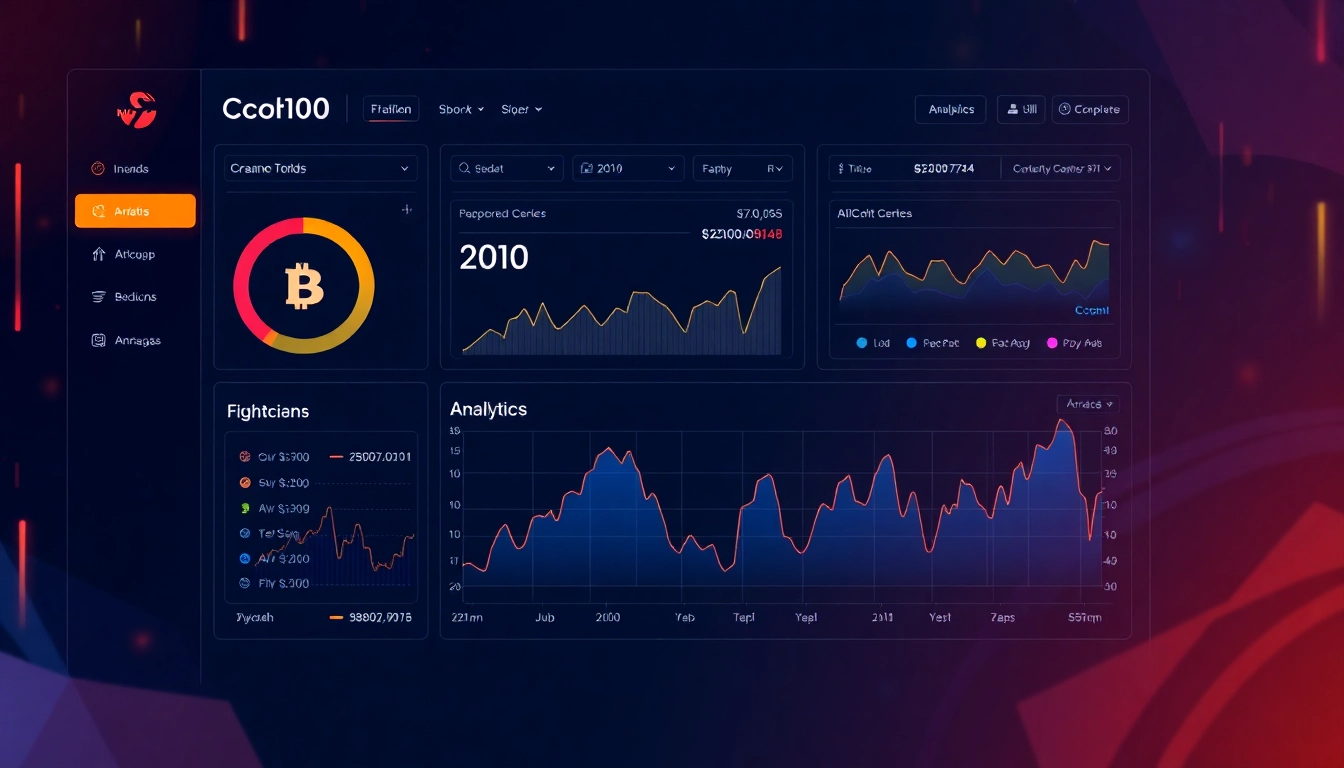Comprehensive Guide to Staking Ethereum with Super in 2024
Ethereum has established itself as a cornerstone of decentralized finance (DeFi), revolutionizing blockchain technology and smart contract capabilities. As the ecosystem matures, staking Ethereum has become one of the most accessible and lucrative ways for holders to generate passive income while contributing to the security and decentralization of the network. For those interested in maximizing yields safely and efficiently, leveraging a platform like staking ethereum on Super offers unparalleled advantages. This article provides an in-depth exploration into Ethereum staking, highlighting core concepts, best practices, advanced strategies, and how Super’s innovative technology facilitates a secure and optimized staking experience.
Understanding Ethereum Staking: Basics and Benefits
What Is Ethereum Staking and How Does It Work?
Ethereum staking involves locking up a specified amount of ETH to support the network’s Proof-of-Stake (PoS) consensus mechanism. Unlike Proof-of-Work, where miners compete to validate transactions, PoS relies on stakeholders or validators who are selected to propose and validate new blocks based on the amount of ETH they have staked. When you stake ETH, you essentially become a validator by delegating your tokens to the network, which enhances security, transaction processing, and decentralization.
The process begins by selecting a reputable staking platform, such as Super, which automatically connects you to multiple high-yield staking opportunities across various protocols. When you stake your ETH, it is delegated to validators or locked in smart contracts, depending on the platform’s architecture. The system then rewards you proportionally to your staked amount, network performance, and staking duration. Rewards are paid out in ETH, and the annual percentage rate (APR) can vary depending on network conditions, validator performance, and the staking platform’s incentives.
Benefits of Staking Ethereum for Users and the Network
- Passive Income Generation: Staking ETH provides regular rewards, often ranging between 4% and 6.5% APR on reputable platforms like Kraken, Coinbase, or Super, allowing users to grow their holdings passively.
- Network Security & Decentralization: Stakers contribute to the integrity and resilience of the Ethereum blockchain by supporting decentralization, making it more resistant to attacks and censorship.
- Environmental Sustainability: Moving from energy-intensive Proof-of-Work to Proof-of-Stake significantly reduces the blockchain’s carbon footprint, aligning with sustainability goals.
- Token Utility & Liquidity Options: Innovative solutions like liquid staking (e.g., Lido) enable users to earn staking rewards while maintaining liquidity through derivative tokens such as stETH.
- Alignment of Interests: Stakeholders have a vested interest in maintaining the network’s health, reducing bad actors through slashing penalties for malicious activities.
By staking on a secure and transparent platform like Super, users can enjoy these benefits while maintaining full control of their assets, as Super operates on a non-custodial basis, ensuring your funds remain under your private keys.
Risks and Considerations Before You Stake ETH
Despite its advantages, Ethereum staking involves certain risks worth considering:
- Slashing & Penalties: Validator misbehavior, such as double signing or going offline, can result in penalties, including the loss of a portion of staked ETH.
- Lock-Up Periods & Liquidity: Although services like Super enable accelerated withdrawals (typically within 6 seconds to 24 hours), some protocols may impose lock-up periods during network upgrades or maintenance.
- Market Volatility: During market downturns, the value of ETH can decline, affecting overall profitability despite staking rewards.
- Technical & Operational Risks: Software bugs, network outages, or exploits can pose risks, but platforms such as Super mitigate this through regular audits and multi-layer security measures.
To minimize these risks, it’s recommended to diversify among validators, choose reputable staking providers, and stay informed about network updates and security patches. Platforms like Super bolster security through industry-leading audits (Certik, Cyberscope, Assure DeFi) and real-time protocol monitoring, providing users with a safe environment to stake Ethereum efficiently.
Choosing the Right Platform for Staking Ethereum
How Super Optimizes Your ETH Staking Rewards
Super is designed to maximize your staking rewards through automatic, real-time yield optimization. Unlike manual staking, where investors need to research individual validators or pools, Super’s platform aggregates over 17,600+ DeFi pools across 300+ protocols spanning 40+ blockchains. Its intelligent algorithms continuously scan and reallocate assets to the highest-yielding opportunities, accounting for fluctuating APYs, network conditions, and risk factors.
For example, if an arbitrage opportunity arises in Ethereum staking pools offering higher returns, Super automatically rebalances your assets across protocols without manual intervention. This dynamic reallocation ensures you earn the best possible returns while maintaining safety, transparency, and full control over your funds.
Security Measures and Non-Custodial Approach
Security is the cornerstone of Super’s architecture. It employs comprehensive safety protocols, including smart contract audits by industry leaders, multi-signature wallets, and advanced threat detection systems. Crucially, Super operates on a non-custodial model, meaning your tokens are not held or managed by the platform, but remain under your control via your Web3 wallet (MetaMask, Trust Wallet, etc.).
Super’s infrastructure is designed to prevent any misuse of funds, with all smart contracts open-source, transparently audited, and verified by prominent cybersecurity firms like Certik. This setup ensures total transparency, eliminating risks of fund misappropriation, lending, or rehypothecation, offering you peace of mind when staking ETH.
Comparison with Other Major Staking Providers
| Criteria | Super | Kraken | Coinbase | Ledger |
|---|---|---|---|---|
| Security & Audits | Industry-leading audits, multi-layer security | Insured, standard security measures | Standard platform security | Hardware security modules & secure storage |
| Control of Funds | Full non-custodial control | Custodial | Custodial | Non-custodial via hardware wallet |
| APY | Up to 6.5%, dynamically optimized | Approx. 1.98% | Variable, around 2-3% | N/A (hardware wallet) |
| Withdrawal Speed | 6 seconds to 24 hours | 7-28 days (unstaking) | 7-28 days | Immediate via hardware |
| Ease of Use | One-click, automated optimization | Manual process | Manual; guided interface | Secure management with hardware |
With its combination of dynamic yield optimization, maximum security, and user-centric features, Super stands out as the premier platform for staking ETH in 2024, especially for those seeking simplicity combined with high performance.
Step-by-Step Guide to Starting Your ETH Staking Journey
Connecting Your Wallet and Selecting ETH for Staking
The initial step involves connecting your preferred Web3 wallet—such as MetaMask, Trust Wallet, or Coinbase Wallet—to the Super platform. Once connected, navigate to the staking interface and select Ethereum (ETH) from supported assets. Super’s intuitive dashboard provides real-time insights into current APYs, staking durations, and potential rewards.
To get started:
- Access Super’s platform.
- Connect your Web3 wallet using compatible browser extensions or mobile apps.
- Select “Stake” and choose ETH from your wallet’s available assets.
- Define your staking amount and preferred duration (if applicable).
Setting Up Automated Rewards with Super
Super automates the optimization of your staking rewards by intelligently routing your ETH to high-yield pools. This automated process involves smart contracts that dynamically allocate your assets, ensuring maximum APY. You can customize your staking parameters or allow Super to handle all rebalancing actions seamlessly. Once your stake is active, rewards accrue continuously, and you can monitor your earnings in real-time through the dashboard.
Withdrawing Staked ETH and Managing Your Rewards
Super ensures rapid withdrawal options, typically within 6 seconds to 24 hours, depending on network conditions. When you decide to unstake, simply submit a withdrawal request via the platform. Your staked ETH along with accumulated rewards will be released directly to your connected wallet, maintaining full control. Periodic claims and partial withdrawals can be configured for flexible management of your assets and income.
Advanced Strategies for Maximizing Returns on Staking Ethereum
Using Restaking and Liquidity Pools for Higher Yields
Beyond traditional staking, Super introduces innovative features like restaking and liquidity pools. Restaking allows you to leverage your staked ETH to earn additional rewards without unstaking or losing liquidity, effectively doubling your earning power. For example, with restaking, your already staked ETH can participate in network consensus and simultaneously be used to earn yields through Layer-2 protocols and cross-chain pools. Additionally, liquidity pools enable you to deposit a single token—such as ETH—and benefit from DEX trading fees, LP rewards, and incentive programs.
Case studies indicate that combining staking with restaking and liquidity pools can boost total yields to over 20-30% APR, especially when optimized with Super’s algorithmic strategies.
Leveraging DeFi Tools to Compound Earnings
DeFi ecosystems provide various tools for compounding yields, such as automated vaults, yield aggregators, and synthetic assets. Super’s platform integrates these tools, allowing you to automatically reinvest rewards or participate in yield farming strategies that compound earnings over time. For example, depositing rewards into stablecoin pools or synthetic asset vaults further amplifies your investment growth while maintaining security and transparency.
Expert tip: Set up automated compounding protocols within Super’s interface to ensure your earnings are continually reinvested, maximizing the power of compound interest.
Risk Management and Regulatory Compliance Tips
For responsible investing, diversify your staking portfolio across multiple assets and validators to mitigate risks. Keep abreast of network upgrades and validator performance metrics to avoid penalties. Ensure your platform is compliant with local regulations—Super’s adherence to international standards offers a safe framework. Always maintain control of private keys, avoid centralized custodians, and use multi-factor security measures.
Future Trends and Enhancements in Ethereum Staking with Super
Upcoming Protocol Updates and New Assets
Ethereum’s transition to sharding and the upcoming Shapella upgrade will introduce more flexibility and reward mechanisms. Super plans to support new protocols and assets that emerge from these upgrades, enabling users to capitalize on evolving DeFi innovations—such as staking derivatives, cross-chain assets, and synthetic instruments.
Integrating Cross-Chain Staking and Yield Farming
Cross-chain interoperability is vital for expanding staking opportunities. Super’s infrastructure is designed to facilitate seamless cross-chain staking, allowing ETH stakers to earn rewards not only within Ethereum but across other Layer-1 and Layer-2 networks like Solana, Polygon, and BNB Chain. Such integrations open avenues for diversified yield strategies and enhanced network robustness.
Maximizing Long-Term Growth with Continuous Monitoring
Super emphasizes proactive monitoring with real-time analytics dashboards. Continuous assessment of validator performance, protocol health, and market conditions guides dynamic rebalancing for optimal yields. Staying informed enables investors to adapt their strategies, ensuring sustainable growth over years rather than short-term gains.



